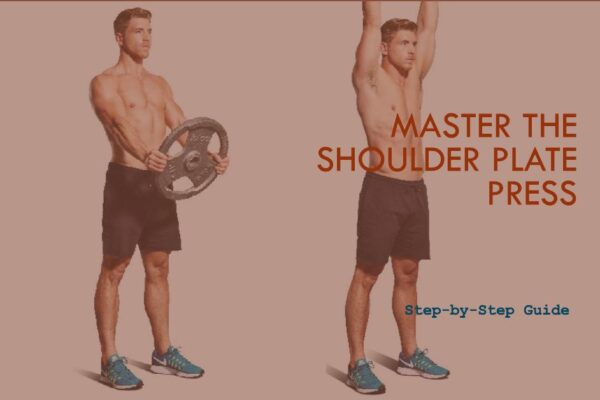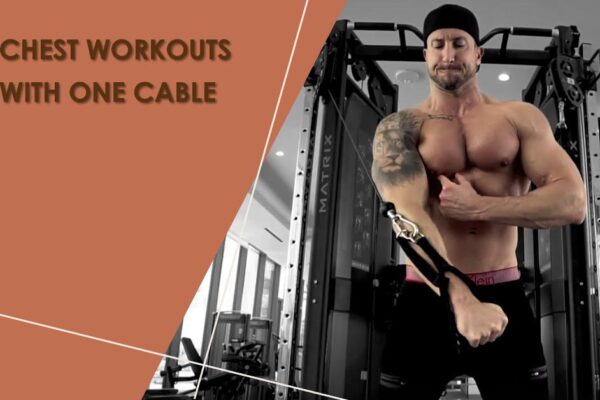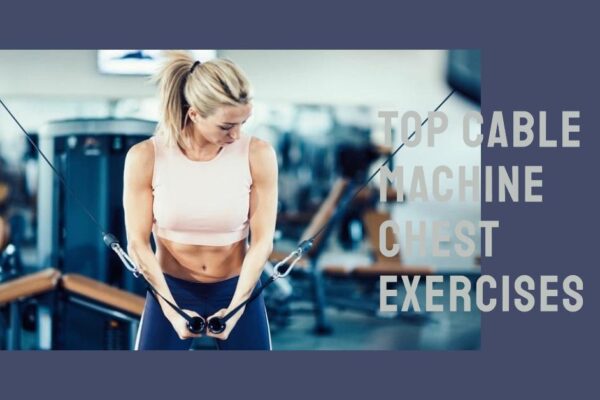Bicep workouts are a series of exercises designed to strengthen and define the bicep muscles. They often include movements like standing barbell curls, incline dumbbell curls, and concentration curls.
These workouts can be performed with various pieces of equipment, including barbells, dumbbells, and resistance bands. Regular bicep workouts can help improve upper body strength, enhance muscle definition, and contribute to overall fitness
In this article, we will provide a comprehensive comparison between the Concentration Curls vs Preacher Curls to help you decide which one is best for your fitness goals.
Concentration Curls vs Preacher Curls
Concentration curls are a pull-style workout that uses free-weight resistance equipment like a dumbbell or kettlebell. This exercise targets the biceps and helps to develop muscle strength and power.
It’s designed to isolate the biceps, providing them with more tension due to the arm’s anchored position. The concentration curl is often performed one arm at a time, either bent over or kneeling
Preacher curls are a bicep-targeting exercise typically done using a barbell, EZ-bar, or dumbbells, along with a special angled bench known as a preacher bench. This exercise isolates the biceps, minimizing the involvement of other muscles and ensuring a more focused workout.
In this exercise, the upper arms are rested on the preacher bench, allowing for a stable movement and preventing any swinging motion. This position can help optimize bicep engagement and promote muscle growth
Difference Between Concentration Curls vs Preacher Curls
The key differences between Concentration curls vs Preacher curls are listed below.
| Aspects | Concentration Curls | Preacher Curls |
|---|---|---|
| Definition | Concentration curls are a type of bicep exercise that is performed using a dumbbell or kettlebell. The lifter leans forward or kneels while curling the weight, focusing on one bicep at a time. | Preacher curls are a variation of the bicep curl where the lifter sits and rests their arms on an angled preacher bench. This position isolates the biceps and allows for a more focused workout. |
| Primary Muscles Worked | Biceps brachii | Biceps brachii |
| Equipment Used | Dumbbell or Kettlebell | Barbell, EZ-bar, or Dumbbells with a Preacher Bench |
| Position | Bent over or kneeling | Moderate to high depending on the weight used |
| Execution | One arm at a time | Can be performed with both arms simultaneously or one at a time |
| Secondary Muscles Worked | Some forearm engagement | Minimal secondary muscle engagement due to isolation of biceps |
| Difficulty Level | Moderate | Moderate to high depending on weight used |
| Suitability | Suitable for beginners and advanced lifters | Mostly preferred by intermediate and advanced lifters |
| Seated with arms resting on the preacher’s bench | Typically an underhand (supinated) grip. | Can vary between underhand (supinated), overhand (pronated), or mixed, depending on the specific preacher curl variation. |
Remember, the best choice between these two exercises depends on your individual fitness goals and physical condition. Always consult with a fitness professional if you’re unsure about which exercise is right for you.
Concentration Curls
Concentration curls are a bicep isolating exercise performed using a dumbbell or kettlebell. The lifter typically stands or sits, leans forward slightly, and places the back of the upper arm against the inner thigh. The weight is then curled up towards the shoulder, keeping the upper arm stationary. This exercise primarily targets the biceps brachii, with secondary engagement of the brachialis and brachioradialis muscles in the forearm.
How To Do It:
To perform the concentration curls with proper form, follow these steps:
A. Setup and Equipment Needed
- You will need a dumbbell or kettlebell for this exercise.
B. Initial Position
- Stand upright with your feet shoulder-width apart.
- Hold the weight in one hand with an underhand grip.
- Place the back of your upper arm against your inner thigh.
C. Execution:
- Slowly curl the weight up towards your shoulder, keeping your upper arm stationary.
- Squeeze the bicep at the top of the movement.
- Lower the weight back down, fully extending your arm.
Muscles Targeted:
Concentration curls target the following muscles:
- Biceps Brachii: The main muscle in the upper arm, responsible for the visible ‘bulge’ when you flex your arm.
- Brachialis: Located underneath the biceps brachii, it helps with the flexing of the elbow.
- Brachioradialis: A muscle of the forearm, it assists in the curling motion and provides additional stability.

Pros and Cons of Concentration Curls
Sure, here’s a table summarizing the pros and cons of concentration curls:
| Pros | Cons |
|---|---|
| Targeted Muscle Isolation: Excellent for isolating the biceps and engaging forearm muscles. | Limited Compound Movement: Primarily targets the biceps and forearms, unlike compound exercises. |
| Controlled Movements: Requires controlled movements, leading to better muscle development and less risk of injury. | Risk of Incorrect Form: If not performed correctly, there could be a risk of strain or other injuries. |
| Versatility: Can be performed in various ways, offering a range of challenges and benefits. | Equipment Requirement: Requires dumbbells or similar weight equipment. |
| Focus on Form: Forces you to focus on your form, which can lead to better overall lifting techniques. | Less Functional: In terms of functional fitness, concentration curls are somewhat limited as they don’t mimic many real-world movements. |
Common Mistakes to Avoid:
While performing concentration curls, there are several common mistakes to avoid for effective results:
- Too Heavy Weights: Using weights that are too heavy can lead to poor form and potential injury. It’s important to use a weight that allows you to maintain proper form throughout the exercise.
- Using Momentum: Swinging the weight or using body momentum to lift the weight reduces the effectiveness of the exercise as it takes tension off the biceps. The movements should be slow and controlled.
- Incorrect Positioning: Your arm should be positioned in a way that allows free movement without restriction. Incorrect positioning, such as wedging your elbow into your thigh, can lead to improper form.
- Moving Elbows Forward: The biceps’ function is to flex the elbow. Moving your elbows forward during the exercise can reduce its effectiveness.
- Incomplete Repetitions: Only doing half or partial reps doesn’t fully engage the muscle. It’s important to perform full reps to maximize muscle engagement.
- Rushing Through Reps: Concentration curls should be performed slowly to fully engage the biceps and increase muscle tension. Rushing through reps can reduce the effectiveness of the exercise and increase the risk of injury.
Tips to Maximize the Results:
- Keep your elbow close to your body throughout the movement.
- Squeeze your bicep at the top of the movement for a second before lowering the weight.
- Use a weight that allows you to perform the exercise with proper form. If you can’t do at least 8 reps, the weight is too heavy. If you can do more than 12 reps easily, the weight is too light.
Preacher Curls
Preacher curls are a bicep curl variation that isolates the biceps, providing a focused workout for muscle growth and strength. The exercise is performed using a preacher bench and a barbell or dumbbell. With the upper arms resting on the inclined part of the bench, the weights are lifted using a controlled motion. This position prevents the use of momentum, ensuring maximum engagement of the biceps. It’s an effective exercise for targeting both the short and long heads of the biceps brachii muscle.
How To Do A Preacher Curls
Preacher curls are an excellent exercise for isolating the biceps and promoting muscle growth. Here’s a step-by-step guide on how to perform them:
A. Setup and Equipment Needed
- You will need a preacher bench and either a barbell or a dumbbell. Some people also use an EZ curl bar for added comfort.
B. Initial Position:
- Sit on the preacher’s bench with your feet flat on the floor.
- Adjust the height of the bench so that your upper arms (from armpits to elbows) can comfortably rest on the padded slope of the bench.
- Grab the barbell or dumbbells with an underhand grip, hands shoulder-width apart.
- Ensure your shoulders are relaxed and your chest is against the pad.
C. Execution of Exercises:
- With your upper arms and chest firmly against the pad, curl the weight upward while keeping your elbows stationary.
- Continue the movement until your biceps are fully contracted and the bar is at shoulder level. Hold the contracted position for a second as you squeeze your biceps.
- Slowly begin to bring the bar back to the starting position as you breathe in. Ensure the movement is controlled and resist the weight on the way back.
- Repeat for the recommended amount of repetitions.
Muscles Used by Preacher Curls
Preacher curls target the following muscles:
- Biceps Brachii: This muscle has two heads, the long and short head, both of which are effectively targeted by preacher curls.
- Brachialis: Located underneath the biceps brachii, this muscle is also worked during preacher curls.
- Brachioradialis: This is a muscle of the forearm that flexes the forearm at the elbow. It’s a secondary muscle involved in preacher curls.
- Wrist Flexors: These are smaller muscles in the forearms that help with grip strength. They get a bit of work as stabilizers while holding the weights.

Remember, while the primary focus of preacher curls is the biceps brachii, they also provide a good workout for other arm muscles.
Tips to Maximize the Results
Follow the below steps to maximize the effectiveness of preacher curls
- Controlled Movements: Ensure that your movements are slow and controlled, both when lifting and lowering the weights. This will increase muscle tension and prevent momentum from taking over.
- Full Range of Motion: Make sure to fully extend your arms at the bottom and fully contract your biceps at the top for each rep. This ensures maximum muscle engagement and growth.
- Proper Form: Keep your upper arms and chest firmly against the pad throughout the movement. This helps isolate the biceps and prevents other muscles from taking over.
- Appropriate Weight: Choose a weight that allows you to complete your reps with good form but is challenging enough to stimulate muscle growth. Lifting too heavy can compromise form and lead to injuries.
- Consistency: Like any exercise, consistency is key. Incorporate preacher curls into your regular workout routine for best results.
- Rest and Recovery: Allow adequate time for your biceps to rest and recover between workouts. Overtraining can hinder muscle growth and lead to injuries.
- Nutrition: Make sure you’re eating a balanced diet with enough protein to support muscle growth and recovery.
- Variety: Mix up your routine by using different grips or equipment like dumbbells, barbells, or an EZ curl bar. This can target the muscles in slightly different ways and promote more balanced growth.
Pros and Cons of Preacher Curls
Sure, here are the advantages and disadvantages of preacher curls
| Pros | Cons |
|---|---|
| Targeted Muscle Isolation: Excellent for isolating and building the biceps. | Limited Compound Movement: Primarily targets the biceps, unlike compound exercises. |
| Reduced Momentum: The preacher bench prevents you from using your back or shoulders to swing the weight, forcing your biceps to do all the work. | Risk of Injury: If not performed correctly, there could be a risk of elbow strain or other injuries. |
| Versatility: Can be performed with different types of equipment. | Equipment Requirement: Requires specific gym equipment (preacher bench). |
| Prevention of Cheating: Since your arms are resting on the bench, it’s difficult to cheat by using other parts of your body. | |
| Suitable for Beginners: Easier form to learn compared to some other bicep exercises. |
Remember, maintaining proper form is crucial when performing any exercise. Always consult with a fitness professional if you’re unsure about the correct form or weight for you.
Common Mistakes to Avoid
Here are some common mistakes to avoid when performing preacher curls:
- Incorrect Form: Maintaining correct form is crucial in any exercise, and the preacher curl is no exception. Keep your chest against the pad and your armpits over the top edge of the bench.
- Using Too Much Weight: Lifting too heavy can lead to improper form and increase the risk of injury. It’s best to start with a manageable weight and gradually increase as your strength improves.
- Not Fully Extending Arms: For maximum benefit, ensure your arms are fully extended at the bottom of the movement. Half reps can limit the effectiveness of the exercise.
- Lifting With Momentum: Using momentum to lift the weight reduces the effectiveness of the exercise and increases the risk of injury. Ensure that you’re controlling the weight throughout the entire movement.
- Not Keeping the Upper Arms Stationary: Your upper arms should remain on the pad and stationary throughout the entire movement. If they’re moving, then you’re likely using other muscles to lift the weight and not isolating the biceps.
- Rushing the Movement: The preacher curl should be performed slowly and controlled, focusing on the muscle contraction and extension. Rushing through the movement can reduce its effectiveness and increase the risk of injury.
- Neglecting the Negative Phase: Lowering the weight (the negative phase) is just as important as lifting it. Control the weight as you lower it to fully engage the biceps.
Frequently Asked Questions
Sure, here’s a comparison of Concentration Curls and Preacher Curls in FAQ format:
| Questions | Concentration Curls | Preacher Curls |
|---|---|---|
| What muscles do they target? | Primarily targets the biceps and brachialis, with secondary engagement of the forearms. | Primarily targets the biceps and brachialis. |
| What equipment is needed? | Dumbbell and a bench (or any suitable surface). | Preacher bench and either a barbell, EZ curl bar, or dumbbells. |
| What are the benefits? | Excellent for isolating the biceps, controlled movements, versatile, and encourages focus on form. | Offers great isolation for the biceps, reduces the ability to cheat by using other muscle groups, and allows for a full range of motion. |
| What are the drawbacks? | Limited compound movement, risk of incorrect form if not careful, requires equipment, and less functional fitness. | Can strain your elbows if not done correctly, requires specific gym equipment, and may not engage as many muscles as compound exercises. |
| Who should do them? | Suitable for individuals looking to improve bicep size and strength, and those needing to work on form and control. | Ideal for those looking to isolate and build their biceps, especially bodybuilders and those with more lifting experience. |
| How to avoid common mistakes? | Ensure correct form, avoid lifting too heavy, fully extend arms, avoid using momentum, keep upper arms stationary, and control the movement. | Ensure correct form, avoid lifting too heavy, fully extend arms at bottom, control the weight, avoid using momentum, and don’t neglect the negative phase. |
Final Thoughts
Concentration Curls and Preacher Curls both effectively target the biceps, but differ in execution and equipment needed. Concentration Curls are versatile and focus on form, making them ideal for those with limited equipment. Preacher Curls provide greater bicep isolation and a full range of motion, but require specific gym equipment. The choice between the two depends on your fitness goals, available resources, and personal preference.






Leave a Reply